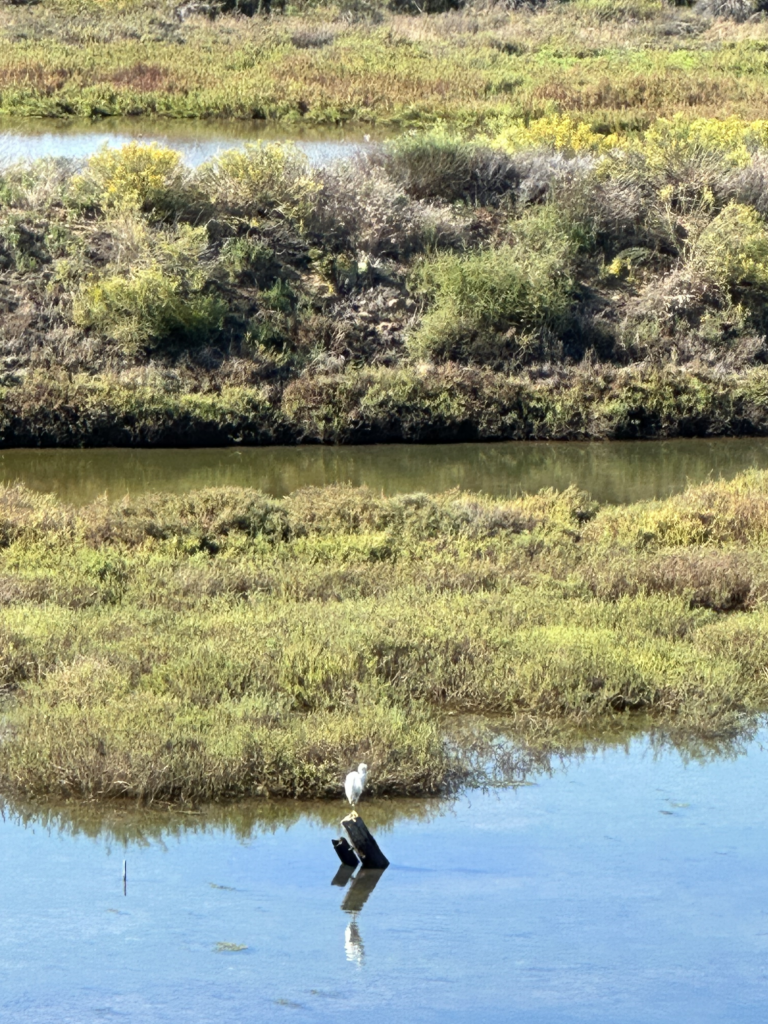San Elijo Lagoon
San Elijo Lagoon is part of the Escondido Creek Watershed. Within its approximately 54,000 acres, stretching from the foothills to the coastline, the last remnants of an imperiled coastal scrub habitat connect the northern and southern parts of an important ecological region.
San Elijo Lagoon is one of San Diego County’s largest coastal wetlands. The 721-acre San Elijo Lagoon Ecological Reserve provides critical migrating waterfowl habitat and nesting sites for sensitive bird species, contributes to coastal fisheries replenishment by providing nursery habitat for young fish, and generally protects a tremendous diversity of plant and animal species. The reserve hosts more than 700 species of plants and animals and is visited by many other migratory species. Many are rare or endangered. Habitats include southern California coastal sage scrub, riparian, and coastal wetland communities.
The ecological reserve shares marine habitat with a Marine Protected Area – the San Elijo Lagoon State Marine Conservation Area. This area includes the waters below the mean high tide line within San Elijo Lagoon southeastward of the Coast Highway bridge over the mouth of the lagoon.

Wetland Expansion Potential
Wetland Migration
The San Elijo lagoon includes substantial areas of upland that will allow landward migration of marsh habitat. Most of the parcels with good potential have already been acquired and added to the preserve. The few remaining parcels are not currently available. The foundation is watching for any acquisition or conservation easement opportunities that might arise.
Constraints
In some areas, wetland expansion is constrained by steep slopes or existing development. Manchester Avenue is a barrier along much of the north side of the lagoon. but for most of the way, the topography is also a barrier north of the road.
Public Access
Recreation
Bordered by North County San Diego gems – Solana Beach, Cardiff-by-the-Sea, and Rancho Santa Fe – the San Elijo Lagoon Ecological Reserve offers 9+ miles of hiking trails via 10 trailheads. Most are considered easy to moderate for hiking and jogging. As you journey our trails connecting wetland habitats of coastal strand, salt marsh, freshwater/brackish marsh, riparian woodland, coastal sage scrub, and mixed chaparral, you’re sure to see many species along the way.
Every day of the year, the trails are open from sunrise to sunset. For the community’s safety, trail closures occur for repairs, restoration projects, and weather hazards. Dogs are allowed on leashes. All wildlife and natural resources are fully protected in the California state and county reserve. Take of all living marine resources is prohibited. Boating, swimming, wading, and diving are prohibited within the conservation area.
The Nature Center includes interpretive exhibits, educational programs, parking, and restrooms. There are no restroom facilities located on the trails.
Transit
The Nature Center is about a mile from a 101 bus stop at Chesterfield and Coast Highway. The 101 connects with Coaster Stations at Encinitas and Solana Beach.
Harbaugh Seaside Trailhead is a short walk on the Coastal Rail Trail from bus stops on Coast Highway at Cliff St. Northbound and Solana Vista St. southbound, or about a half mile from the Solana Beach train station served by the Coaster and Amtrak. With the new bridges across the tidal channels, the entire preserve is accessible via the trail network from the Harbaugh and Nature Center trailheads.